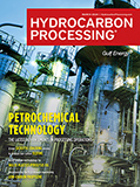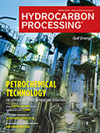HP Reliability: Digital control systems represent state-of-the-art
Control systems for steam turbines driving process compressors now provide many more functions beyond speed control. These systems can be custom programmed to provide whatever extent of..
IP: 18.222.163.31
The Author
Bloch, Heinz P. -
Hydrocarbon Processing Staff, Montgomery, Texas
Heinz P. Bloch resides in Montgomery, Texas. He retired as Exxon Chemical’s Regional Machinery Specialist for the U.S. and has authored or co-written more than 780 publications, among them 23 comprehensive books on practical machinery management, failure analysis, failure avoidance, compressors, steam turbines, pumps, oil mist lubrication and optimized lubrication for industry. Mr. Bloch holds BS and MS degrees (cum laude) in mechanical engineering from the Newark College of Engineering (NCE). He is one of 10 inaugural inductees into NCE’s Hall of Fame, which honors its most distinguished alumni.
Related Articles
From the Archive
Current Digital Edition
Sign up to Receive Our Newsletter
Latest News
Construction Boxscore: Project Spotlight
Project:
Long Son Petrochemicals Complex
Location:
Long Son, Vietnam
Operator:
Siam Cement Group
Cost:
$5.4 B
Capacity:
1.65 MMtpy
Completion date:
2023
Status:
Under Construction







Comments